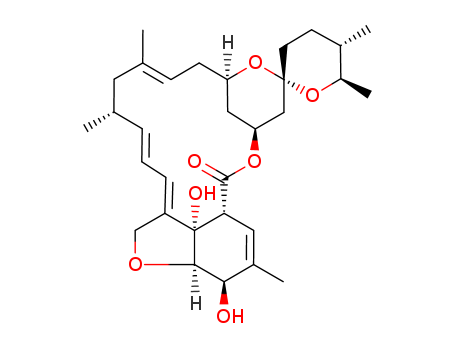- Chemical Name:Milbemycin A3
- CAS No.:51596-10-2
- Deprecated CAS:56197-00-3
- Molecular Formula:C31H44O7
- Molecular Weight:528.686
- Hs Code.:
- European Community (EC) Number:610-705-0,684-598-4
- UNII:C76Y8Z9GEX
- DSSTox Substance ID:DTXSID1058391
- Nikkaji Number:J34.159B
- Wikidata:Q27119774
- Metabolomics Workbench ID:56196
- ChEMBL ID:CHEMBL2272396
- Mol file:51596-10-2.mol
Synonyms:5-hydroxymilbemycin beta7;CL 301,423;CL 301423;Cydectin;Milbeknock;milbemectin;milbemycin A3;milbemycin A4;milbemycin alpha1;milbemycin alpha10;milbemycin alpha11;milbemycin alpha13;milbemycin alpha14;milbemycin alpha15;milbemycin alpha2;milbemycin alpha3;milbemycin alpha4;milbemycin alpha5;milbemycin alpha6;milbemycin alpha7;milbemycin alpha8;milbemycin alpha9;milbemycin B;milbemycin beta1;milbemycin beta12;milbemycin beta2;milbemycin beta3;milbemycin D;milbemycins;mixture of milbemycins A3 and A4;moxidectin




